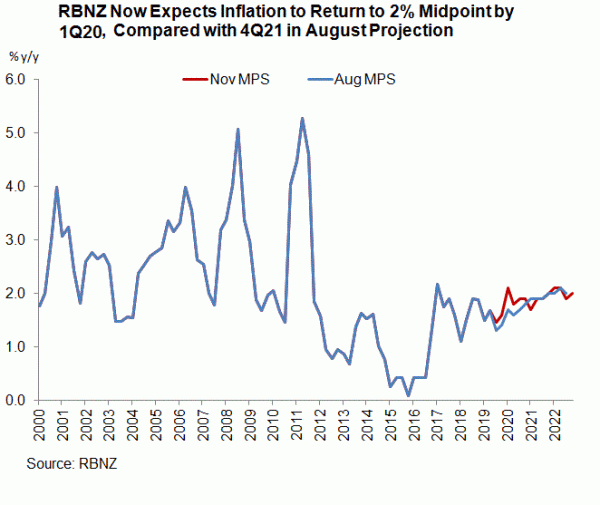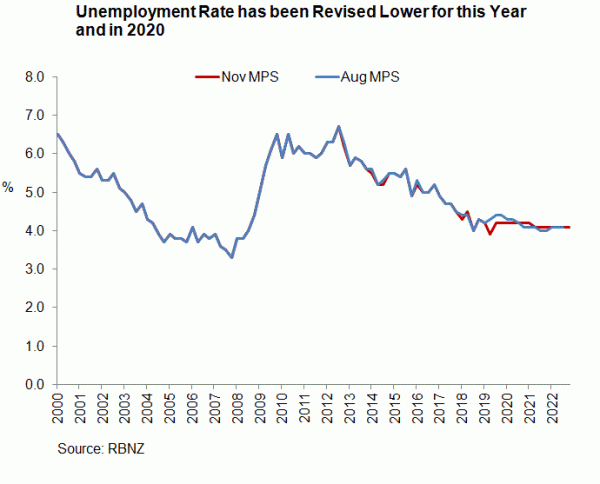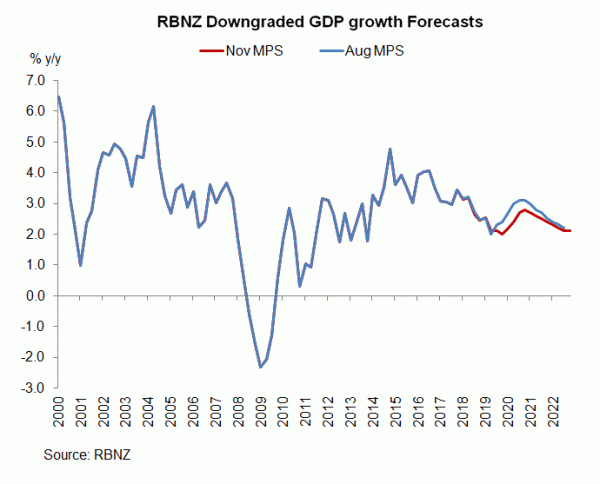RBNZ left the OCR unchanged at 1% in October. The members acknowledged that inflation stayed below the midpoint of the 2% target and inflation forecasts have declined. Yet, they believe previous monetary easing should lift the price level back to target. Meanwhile, they noted that weakness in exchange rate would offset economic slowdown.
At the monetary policy statement, the central bank acknowledged that economic growth continued to “slow in mid-2019”, as a result of “weak business investment” and “soft household spending”. While employment remained “around its maximum sustainable level”, inflation has stayed below the 2% target midpoint. The members expect growth to remain “subdued” for the rest of the year. They also noted that inflation, while easing, has remained within the target range. All in all, the members unanimously judged that economic developments since the August statement “do not warrant a change to the already stimulatory monetary setting”.
Concerning its trading partners, RBNZ noted that “growth in global trade and manufacturing is weak and uncertainty remains high, dampening global business investment”. Yet, it added that the country’s “export commodity prices have been robust, underpinning a positive terms of trade”. Meanwhile, weakness in NZD has been providing “useful additional offset” to global economic slowdown
On the monetary policy outlook, the members affirmed that interest rates should stay “at low levels for a prolonged period” for inflation to return to the midpoint of the target range (1-3%) and for employment to stay around the “maximum sustainable level”.
Kiwi rebounded strongly as the central bank refrained from easing further this month. RBNZ forecasts headline CPI to return to the 2% midpoint by 1Q20, compared with 4Q21 in August. We believe the central bank’s economic forecasts are too optimistic. We expect further rate cuts, probably in 1Q20 and 2Q20, would be needed in order to stimulate the economy and inflation.















